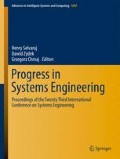Abstract
In this paper, a novel active learning technique was proposed for solving multiclass classification problem with random forest classifier. By combining uncertainty, density, and diversity criteria, the most informative samples are selected for manually labeling. The uncertainty criterion is implemented by analyzing the difference between the most votes and second most votes from classifier’s output. Samples in dense regions are thought to be more informative than samples in sparse regions. The average distance of a sample to its k-nearest unlabeled neighbors is computed to describe the sample’s density. The distance between a sample and its nearest labeled sample is used to measure the diversity of the sample. The larger the distance is, the less redundancy the sample is. To assess the effectiveness of the proposed method, it was compared with other techniques like traditional active learning based on random forest and SVM. The results of the experiment on terrain classification have demonstrated the effectiveness of the proposed approach.
Access this chapter
Tax calculation will be finalised at checkout
Purchases are for personal use only
References
D. A. Cohn, Z. Ghahramani, and M. I. Jordan, “Active learning with statistical models,” Journal of Artificial Intelligence Research, vol. 4, pp. 129–145, 1996.
B. Settles, “Active learning literature survey,” University of Wisconsin, Madison, 2010.
S. Tong and E. Chang, “Support vector machine active learning for image retrieval,” in Proceedings of the ninth ACM international conference on Multimedia. ACM, 2001, pp. 107–118.
S. Tong and D. Koller, “Support vector machine active learning with applications to text classification,” The Journal of Machine Learning Research, vol. 2, pp. 45–66, 2002.
S.-J. Huang, R. Jin, and Z.-H. Zhou, “Active learning by querying informative and representative examples.” in NIPS, vol. 23, 2010, pp. 892–900.
S. C. Hoi, R. Jin, J. Zhu, and M. R. Lyu, “Semi-supervised svm batch mode active learning for image retrieval,” in Computer Vision and Pattern Recognition, 2008. CVPR 2008. IEEE Conference on. IEEE, 2008, pp. 1–7.
D. Tuia, F. Ratle, F. Pacifici, M. F. Kanevski, and W. J. Emery, “Active learning methods for remote sensing image classification,” Geoscience and Remote Sensing, IEEE Transactions on, vol. 47, no. 7, pp. 2218–2232, 2009.
S. Patra and L. Bruzzone, “A cluster-assumption based batch mode active learning technique,” Pattern Recognition Letters, vol. 33, no. 9, pp. 1042–1048, 2012.
L. Shi, Y. Zhao, and J. Tang, “Batch mode active learning for networked data,” ACM Transactions on Intelligent Systems and Technology (TIST), vol. 3, no. 2, p. 33, 2012.
G. Chmaj, K. Walkowiak, M. Tarnawski, and M. Kucharzak, “Heuristic algorithms for optimization of task allocation and result distribution in peer-to-peer computing systems,” International Journal of Applied Mathematics and Computer Science, vol. 22, no. 3, pp. 733–748, 2012.
G. Chmaj and S. Latifi, “Decentralization of a multi data source distributed processing system using a distributed hash table.” International Journal of Communications, Network & System Sciences, vol. 6, no. 10, 2013.
D. DeBarr and H. Wechsler, “Spam detection using clustering, random forests, and active learning,” in Sixth Conference on Email and Anti-Spam. Mountain View, California, 2009.
L. Breiman, “Random forests,” Machine learning, vol. 45, no. 1, pp. 5–32, 2001.
J. Gall and V. Lempitsky, “Class-specific hough forests for object detection,” in Decision Forests for Computer Vision and Medical Image Analysis. Springer, 2013, pp. 143–157.
A. Yao, J. Gall, and L. Van Gool, “A hough transform-based voting framework for action recognition,” in Computer Vision and Pattern Recognition (CVPR), 2010 IEEE Conference on. IEEE, 2010, pp. 2061–2068.
C. Marsala and M. Detyniecki, “High scale video mining with forests of fuzzy decision trees,” in Proceedings of the 5th international conference on Soft computing as transdisciplinary science and technology. ACM, 2008, pp. 413–418.
Random forest packages. [Online]. Available: http://cran.r-project.org/web/packages/
University of oulu texture database. [Online]. Available: http://www.outex.oulu.fi/temp/
Hand-labeled darpa lagr datasets. [Online]. Available: http://www.mikeprocopio.com/labeledlagrdata.html
M. Pietikäinen, T. Nurmela, T. Mäenpää, and M. Turtinen, “View-based recognition of real-world textures,” Pattern Recognition, vol. 37, no. 2, pp. 313–323, 2004.
T. Ojala, M. Pietikainen, and T. Maenpaa, “Multiresolution gray-scale and rotation invariant texture classification with local binary patterns,” Pattern Analysis and Machine Intelligence, IEEE Transactions on, vol. 24, no. 7, pp. 971–987, 2002.
M. J. Procopio, J. Mulligan, and G. Grudic, “Learning terrain segmentation with classifier ensembles for autonomous robot navigation in unstructured environments,” Journal of Field Robotics, vol. 26, no. 2, pp. 145–175, 2009.
Acknowledgment
This work is partially supported by National Natural Science Foundation of China under Grant Nos. 61373063, 61233011, 61125305, 61375007, 61220301, and by National Basic Research Program of China under Grant No. 2014CB349303.
Author information
Authors and Affiliations
Corresponding author
Editor information
Editors and Affiliations
Rights and permissions
Copyright information
© 2015 Springer International Publishing Switzerland
About this paper
Cite this paper
Gu, Y., Zydek, D., Jin, Z. (2015). Active Learning based on Random Forest and Its Application to Terrain Classification. In: Selvaraj, H., Zydek, D., Chmaj, G. (eds) Progress in Systems Engineering. Advances in Intelligent Systems and Computing, vol 366. Springer, Cham. https://doi.org/10.1007/978-3-319-08422-0_41
Download citation
DOI: https://doi.org/10.1007/978-3-319-08422-0_41
Publisher Name: Springer, Cham
Print ISBN: 978-3-319-08421-3
Online ISBN: 978-3-319-08422-0
eBook Packages: EngineeringEngineering (R0)

